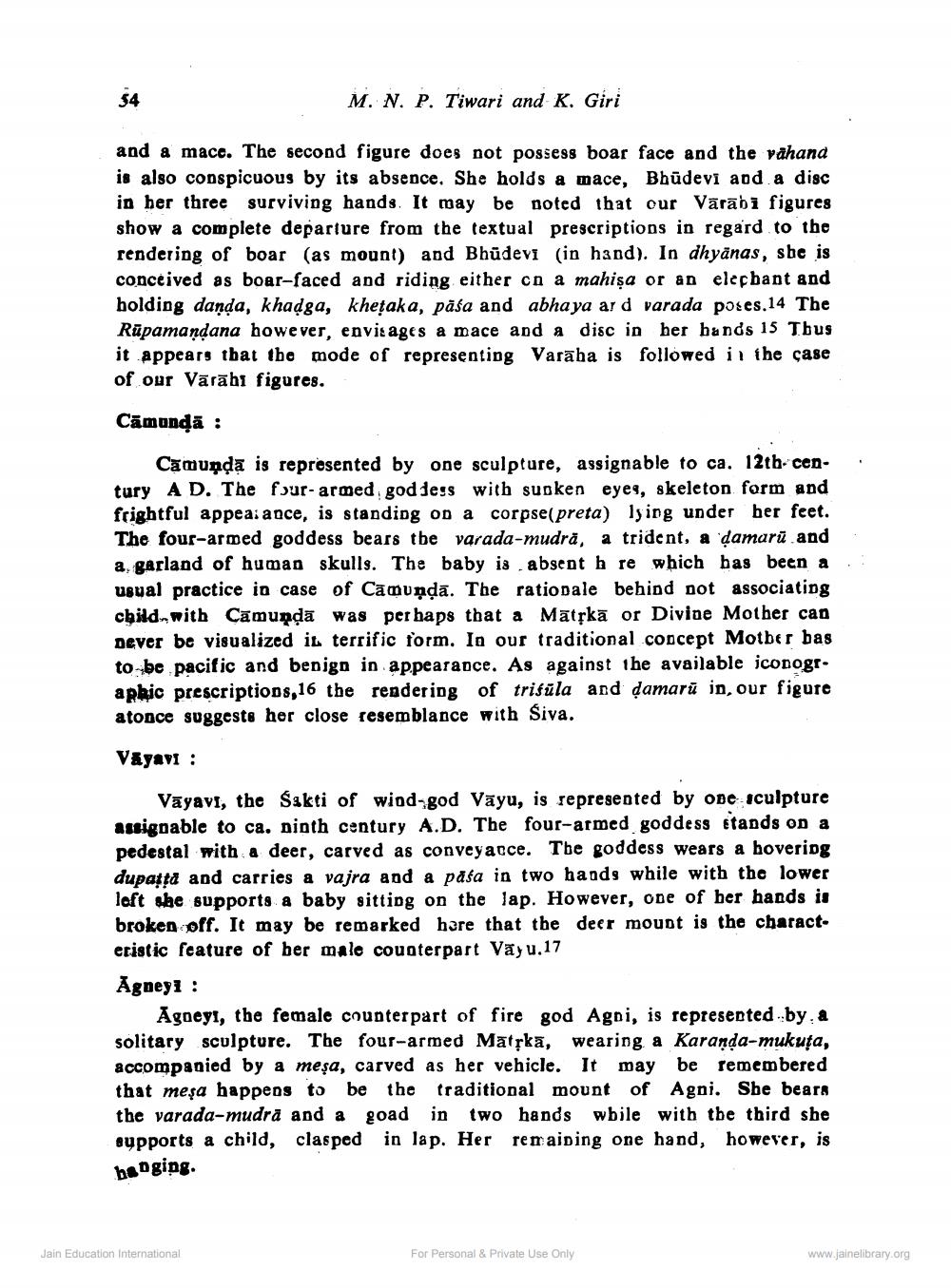________________
54
M. N. P. Tiwari and K. Giri
and a mace. The second figure does not possess boar face and the vahand is also conspicuous by its absence. She holds a mace, Bhudevi and a disc in her three surviving hands. It may be noted that our Varābi figures show a complete departure from the textual prescriptions in regard to the rendering of boar (as mount) and Bhudevi (in hand). In dhyanas, she is conceived as boar-faced and riding either cn a mahisa or an elephant and holding danda, khadga, khelaka, paša and abhaya ard varada poses.14 The Rapamaṇḍana however, envisages a mace and a disc in her hands 15 Thus it appears that the mode of representing Varäha is followed in the case. of our Väräht figures.
Camunda :
Camunda is represented by one sculpture, assignable to ca. 12th-century AD. The four-armed, goddess with sunken eyes, skeleton form and frightful appea: ance, is standing on a corpse(preta) lying under her feet. The four-armed goddess bears the varada-mudra, a trident. a damara and a, garland of human skulls. The baby is absent h re which has been a usual practice in case of Camunda. The rationale behind not associating child with Camunda was perhaps that a Matrka or Divine Mother can never be visualized it terrific form. In our traditional concept Mother bas to be pacific and benign in appearance. As against the available iconogr aphic prescriptions,16 the rendering of trifüla and damarü in, our figure atonce suggests her close resemblance with Siva.
Vayavi:
Vayavi, the Sakti of wind-god Vayu, is represented by one sculpture assignable to ca. ninth century A.D. The four-armed goddess stands on a pedestal with a deer, carved as conveyance. The goddess wears a hovering dupatta and carries a vajra and a pata in two hands while with the lower left she supports a baby sitting on the lap. However, one of her hands is broken off. It may be remarked here that the deer mount is the characteristic feature of her male counterpart Vayu.17
Agney1:
Agney, the female counterpart of fire god Agni, is represented by a solitary sculpture. The four-armed Matṛka, wearing a Karaṇḍa-mukuta, accompanied by a mesa, carved as her vehicle. It may be remembered that mesa happens to be the traditional mount of Agni. She bears the varada-mudra and a goad in two hands while with the third she supports a child, clasped in lap. Her remaining one hand, however, is hanging.
Jain Education International
For Personal & Private Use Only
www.jainelibrary.org




